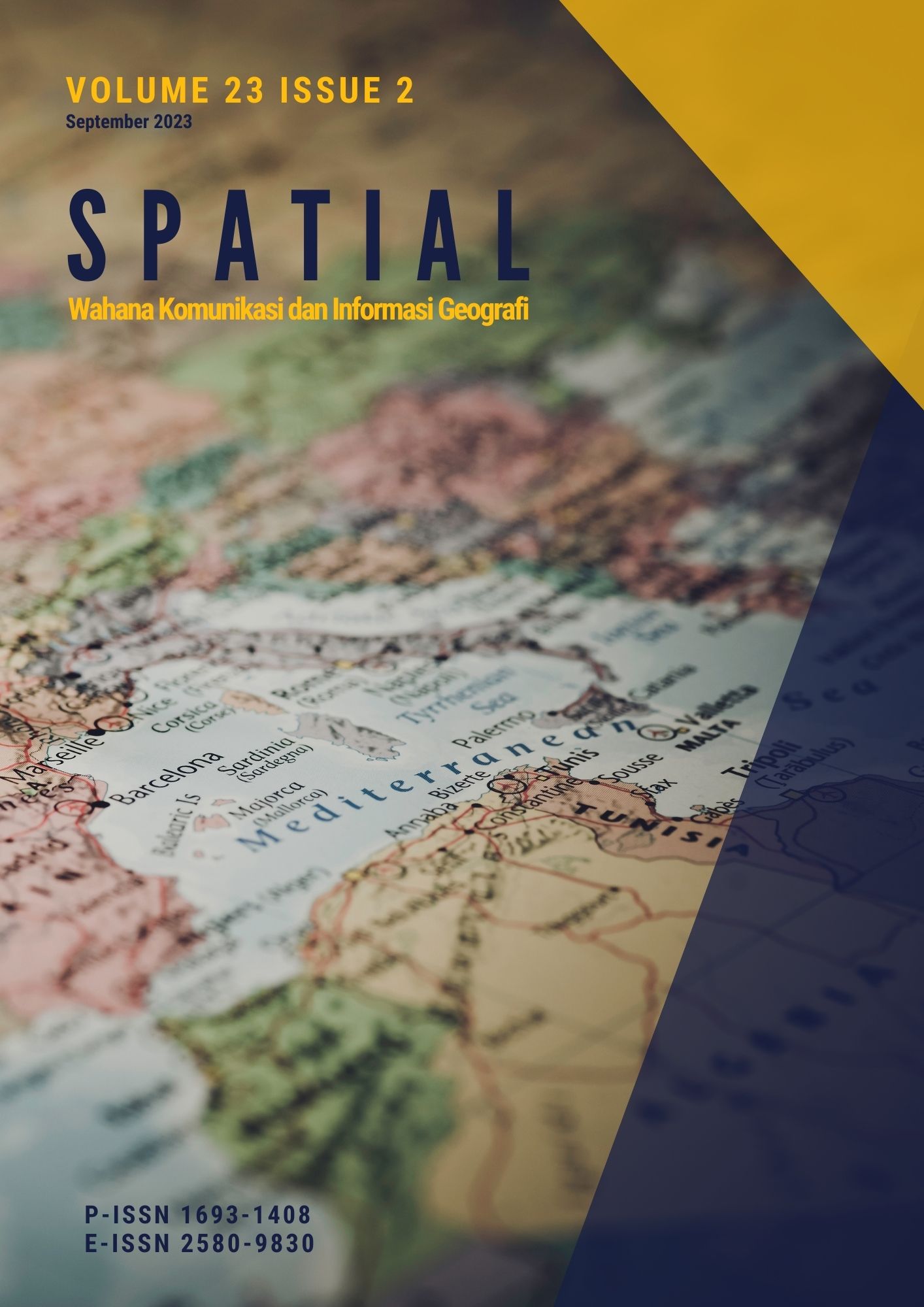Data Pesawat Udara Tanpa Awak Untuk Pendukung Analisis Dinamika Pesisir dan Erosi Pantai
A Case Study of Pandansimo Beach, Bantul, The Special Region of Yogyakarta
DOI:
https://doi.org/10.21009/spatial.232.04Keywords:
Disaster, coast, coastal erosion, UAV, BantulAbstract
The coastal area is one of the most vulnerable areas to the threat of disaster due to the acceleration of climate change. One of the almost universal threats in coastal areas worldwide is coastal erosion. The coastal area of Bantul District, Special Region of Yogyakarta, is one of the areas that is quite severely affected by coastal erosion. This research aims to (1) determine the dynamics of the coastal area in the Pandansimo Beach area; (2) map the rate of abrasion at Pandansimo Beach, and (3) determine the leading causes of the coastal erosion that occurs. High-resolution Pleiades satellite data with a 50cm spatial resolution is used to determine the temporal changes in the coastline. In addition, satellite imagery from Google Earth is also used for the analysis from 2010-2021. The changes in the coastline are calculated using the DSAS software. Detailed morphological data was obtained from the acquisition of aerial photos using a multirotor unmanned aircraft. Based on the analysis, it was found that the process of coastal erosion dominated the dynamics of the coastal area. The average coastline regression value was recorded at 2.46 meters/year. Hydrodynamic and morphodynamic factors such as wind and wave forces, diminishing of fluvial sediment supply, and climate change are believed to cause coastal erosion.
Downloads
Published
How to Cite
Issue
Section
License
Copyright (c) 2023 Hendy Fatchurohman, Like Indrawati, Iswanti Rahayu Ningtiyas, Nur Anisa Nadhira, Sasvita Gevi Meliyasari

This work is licensed under a Creative Commons Attribution 4.0 International License.
An author who publishes in the journal SPATIAL Wahana Komunikasi dan Informasi Geografi agrees to the following terms:
Author retains the copyright and grants the journal the right of first publication of the work simultaneously licensed under the Creative Commons Attribution 4.0 License that allows others to share the work with an acknowledgement of the work's authorship and initial publication in this journal
Author is able to enter into separate, additional contractual arrangements for the non-exclusive distribution of the journal's published version of the work (e.g., post it to an institutional repository or publish it in a book) with the acknowledgement of its initial publication in this journal.
Author is permitted and encouraged to post his/her work online (e.g., in institutional repositories or on their website) prior to and during the submission process, as it can lead to productive exchanges, as well as earlier and greater citation of the published work (See The Effect of Open Access).
This work is licensed under a https://creativecommons.org/licenses/by/4.0/









